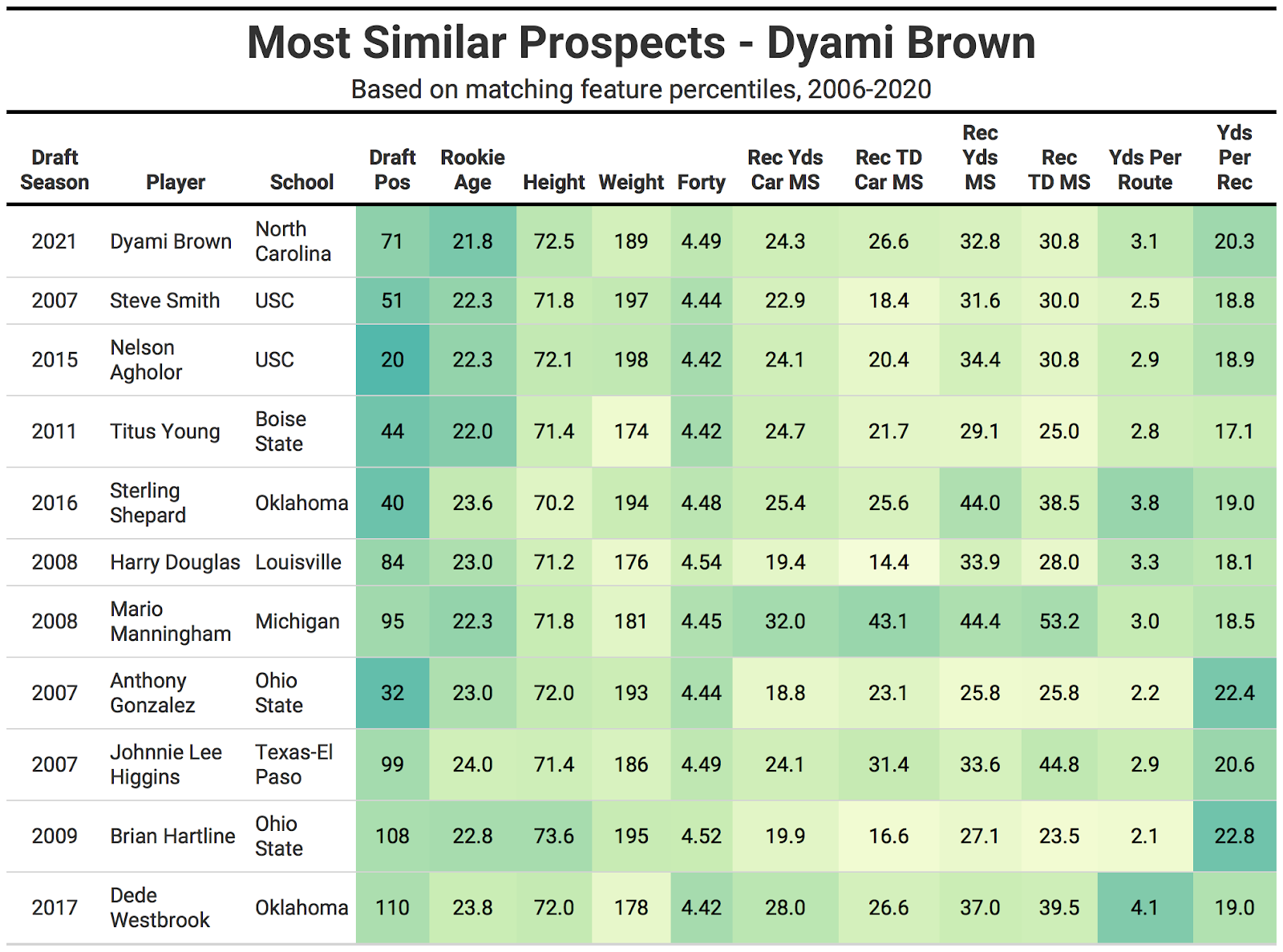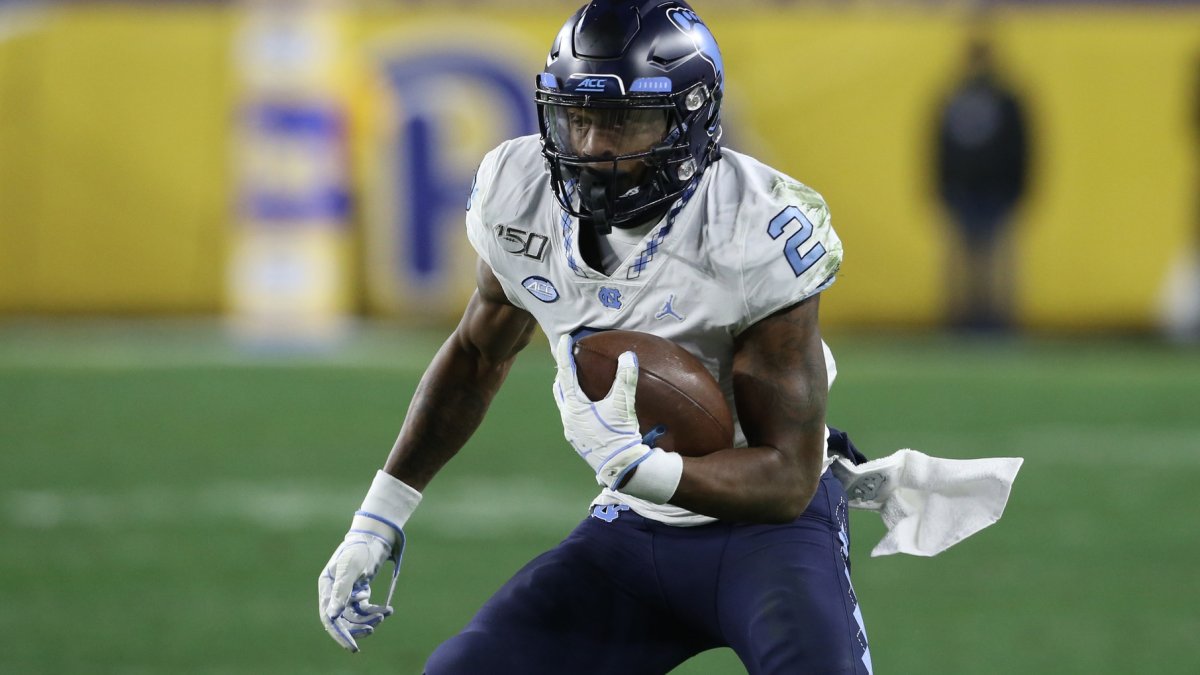Comparing current NFL draft prospects to those of years past is standard procedure in draft evaluation, though most comparisons are built on the memory recall and subjective opinion of the particular evaluator.
This will be the first in a series of articles comparing the 2021 draft prospects to prior years and picking out the most similar comps with a clearly delineated and quantifiable method.
PFF data scientist Eric Eager has done tremendous work building college-to-pro projections, which are built off the robust college data we’ve collected since 2014 and have been applied to exercises like building an “Analytics” Mock. In this analysis, I will use some of our advanced stats for comparison but primarily rely on traditional stats to go back further to compare the 2021 prospects to draft classes going back to 2006.
Without the NFL Scouting Combine this season, the important measurables like weight and 40-yard dash will be reported through the various pro days that will be taking place over the next few weeks.
View PFF's 2021 NFL Draft position rankings:
QB | RB | WR | TE | T | iOL | DI | EDGE | LB | CB | S
METHODOLOGY
The comps below were derived from a two-step process. First, I converted all the most statistically relevant stats and measurables to percentiles based on the thousands of prospects who have entered the NFL since 2006 at each position. Then, I filtered the total universe of past prospects by those who had draft positions, weight and 40 times within a 10th percentile in either direction of North Carolina WR Dyami Brown. For undrafted players, I assigned a numerical draft position of 300.
The rest of the matching features were transformed by principal component analysis (PCA). I found the closest statistically comparable players by the euclidean distance between the players' principle components, listed in the top 10 below.
The metrics for PCA are career market shares for receiving yards and receiving touchdowns, best-season market shares for receiving yards and touchdowns, yards per route run, and yards per reception.
For Brown's draft position, I’m using an estimate based on the mock data collected at GrindingTheMocks.com. For the weight and 40 time, I’m using the numbers from his pro day, with a 0.03-second penalty added to the 40 time to reflect the uncertainty of pro-day timed measurements.
Most comparable players
Brown was by no means slow at his pro day, running a 4.46-second 40-yard dash (63rd percentile), but it hints at the lack of dynamic speed needed to continue as a primary deep threat at the NFL level. Brown’s overall athletic profile was strong, and it is highlighted by a vertical of 38 inches (79th), a broad jump of 10-foot-8 (89th) and a three-cone time of 6.87 seconds (65th).
Brown’s 18.5-yard average depth of target was second among receivers with at least 50 targets in 2020.
Dyami Brown is one of the best deep-threats in this class.
He has a solid size/speed combo, elite body control, great ball skills, YAC ability and he's aggressive at the catch point.
He's definitely one of my favourites Day 2 WR, upside is through the roof. #CarolinaFootball pic.twitter.com/cR2dDXAOEY
— Luca Sartirana (@SartiranaLuca) April 2, 2021

Sterling Shepard is the NFL player comparison in our PFF 2021 NFL Draft Guide, and he is the fourth-most similar prospect according to the traditional stats. Most of Brown’s comps were useful but not outstanding producers at the NFL level.
Exclusive content for premium subscribers

WANT TO KEEP READING?
Dominate Fantasy Football & Betting with AI-Powered Data & Tools Trusted By All 32 Teams
Already have a subscription? Log in




 © 2025 PFF - all rights reserved.
© 2025 PFF - all rights reserved.